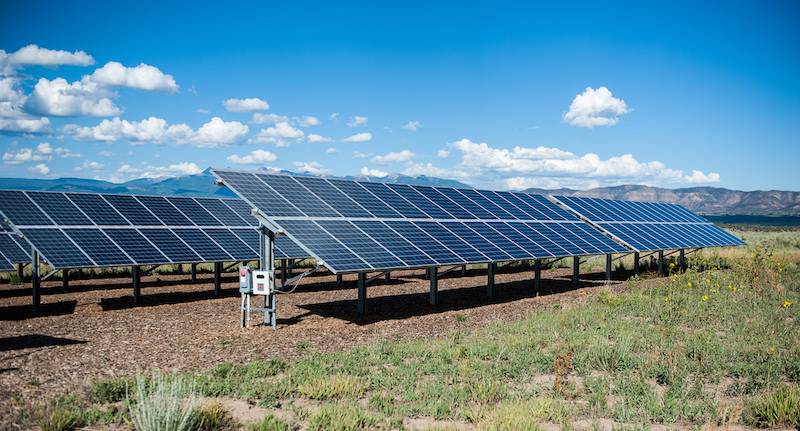Photo: US Department of Energy, Flickr
With the midterm elections behind us, it’s worth pondering what the outcome means for the environment next year.
One can expect significant action in Colorado and New Mexico in two areas where states have a primary role – energy and pollution policy. This is particularly timely given the Trump administration’s denial of climate change and its abandonment of a federal role in controlling methane pollution.
Colorado’s Gov.-elect Jared Polis made an ambitious goal of reaching 100 percent renewable energy in 20 years a centerpiece of his campaign. Now, it will be up to Polis and the incoming Legislature to make that a reality. Colorado has been a leader to date, as exemplified by the Vestas wind turbine factory in Pueblo, and Xcel Energy’s willingness to trade its coal portfolio for a renewable one comprised of wind and solar.
One key aspect of the renewable energy push will be making it a broad-based effort that encompasses the whole state. That means removing obstacles to local renewable energy throughout Tri-State Generation & Transmission Association’s territory, and making sure legislative requirements or incentives are not derailed by Tri-State’s obstinate opposition to allowing local, rural electric co-ops more say in their energy futures.
Another key component will be ensuring towns like Nucla and Craig, which bear the brunt of the economic transition from coal to renewables from the impending closures of power plants in those communities, gain some assistance in a transition to a new energy economy. Perhaps that takes the form of locating renewable energy sources there to make good use of an existing workforce already trained in electric generation and transmission.
While the ballot initiative to increase oil and gas drilling setbacks failed, the motivated backers of Proposition 112 are unlikely to vanish. Expect the Legislature, or the Colorado Oil and Gas Conservation Commission at the governor’s suggestion, to craft something that invites local governments into a greater partnership role, so that oil and gas drilling decisions take into account local values and concerns.
Our neighbors in New Mexico are similarly situated to undertake policies affecting air quality and climate in our interconnected basin. The Four Corners has earned a reputation as the nation’s methane hot spot owing to pervasive methane emissions associated with a vast number of oil and gas wells.
New Mexico’s incoming governor, Michelle Lujan Grisham, committed to reducing methane waste and pollution with a state rule to both address climate change impacts and capture a valuable resource to boost funding for schools from royalties.
At the federal level, the Trump administration has told the Bureau of Land Management to abandon its rule that reduces the wasteful squandering of methane produced on federal oil and gas wells, and similarly, the administration just announced plans requiring the Environmental Protection Agency to repeal nationwide rules that control methane pollution. Expect New Mexico to fill the hole left by the federal government in capturing and controlling methane.
Decisions about the fate of coal power plants in the Four Corners are also imminent next year. Public Service Co. of New Mexico will officially file plans to abandon the San Juan Generating Station early in 2019. Simultaneously, legislators will propose boosting the state’s renewable energy requirements from 20 percent to something more substantial, like 50 percent.
As in Colorado, a wild card may be Tri-State and whether increasing renewable energy standards will include electric co-ops or not. Will we see Tri-State’s lumberjack clad actor Randy Renewable riding into the New Mexico Capitol to lobby against renewable energy?
With leadership on renewable energy and methane pollution absent at the federal level, the coming year offers enormous potential to chart a different course in the states.
This content first published in The Durango Herald’s Thinking Green Column here.



